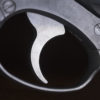If there are children in your home, extra steps must be taken to secure your firearms when not in use. Even if you just have children who visit occasionally, you must take extra care. It’s often when you aren’t used to having visitors in the house that an accident occurs. After all, you know you can leave your gun on your dresser because you’re safe with it. But what might happen if someone comes over that you don’t expect?
Curious children can harm themselves and others when left unsupervised for even a short amount of time. Below are different methods to secure your firearms that help prevent accidents when you are not present.
Cable Locks
Cable locks should be used as a second layer of security after you have secured your firearm in a safe, locking cabinet, or some other location that is inaccessible to the children in your home. Cable locks work by simply passing a cable down the barrel, through the action, and back into the locking pad. Cable locks are designed to discourage use of your firearm by young children, and should not be the only method used to secure your firearms.
Trigger locks
Another second layer security device, trigger locks should be used after storing your firearms in a location inaccessible by children. Trigger locks work by placing a metal rod behind the trigger and covering the trigger guard. There are many manufacturers of trigger locks, and not all trigger locks will fit your firearms appropriately.
Safes and cabinets
The safe or cabinet you choose to secure your firearms should be bolted to the floor or wall. Preferably, your safe does not use keys that your children could take to gain access, but a rather a combination lock that only you know. A great way to prevent accidents with children is to secure your firearms unloaded, and keep ammunition secured in a separate location.
For home protection during the night, try using a small safe that is bolted to the floor or wall near your bed. Keep only one firearm and ammunition in this safe.
Teaching children about guns
How your children react to firearms when unsupervised depends on the training you have provided them. For very young children, you may want to teach them to leave the room, taking any other children with them, and telling an adult immediately. As your child grows older, you may want to let them watch as you clean your firearms, and explain each part and its function as you go. When they grow older and more mature, then you can bring them along when you practice shoot, and teach them safe handling techniques when they are ready to take their first shot.
How you secure your firearms and ammunition should be based on what is most effective for you and your family. No one knows your children better, so only you can make the best decisions on how to keep your firearms inaccessible. You must also decide when it is appropriate to talk to your children about firearms, what information you provide them, and how to react if they find a firearm when you are not around. When your children are ready, a great way to introduce them to gun safety is to watch our free, online training video together.


